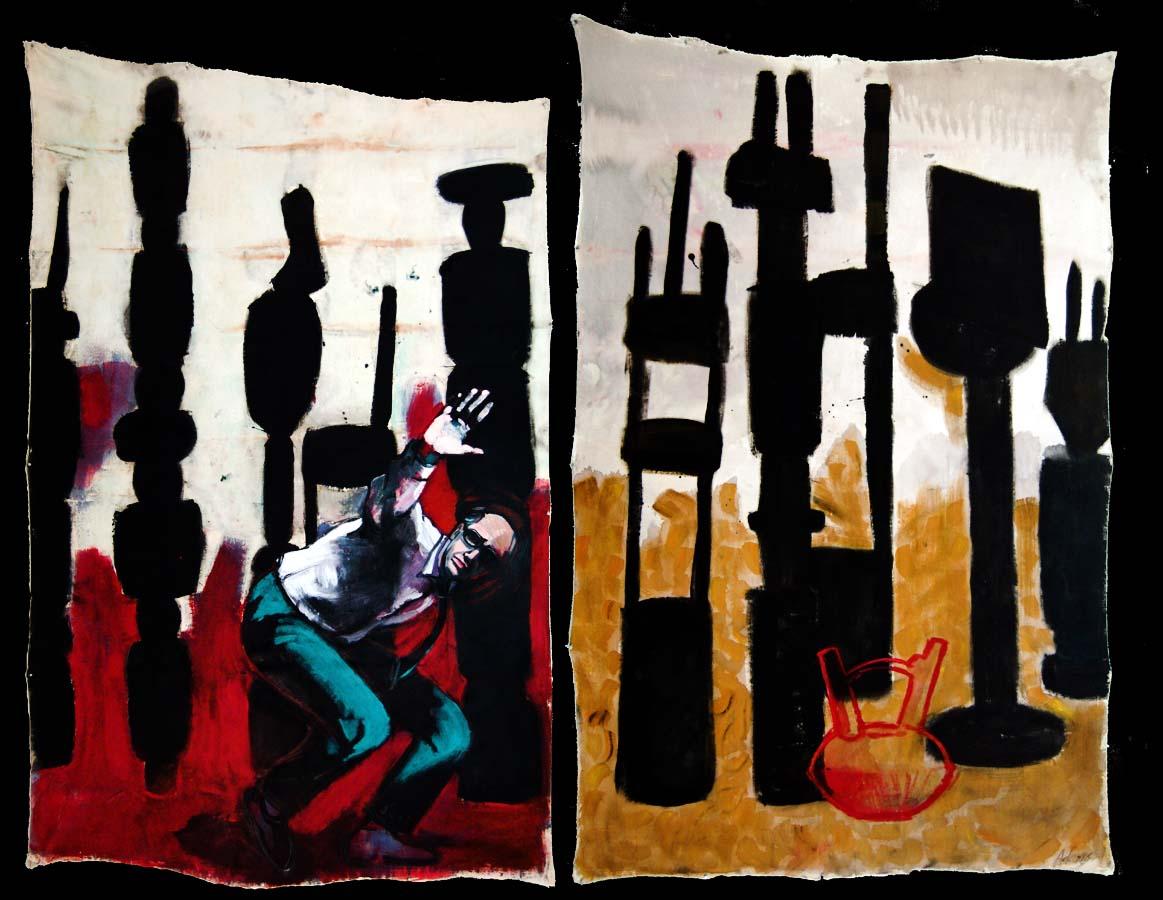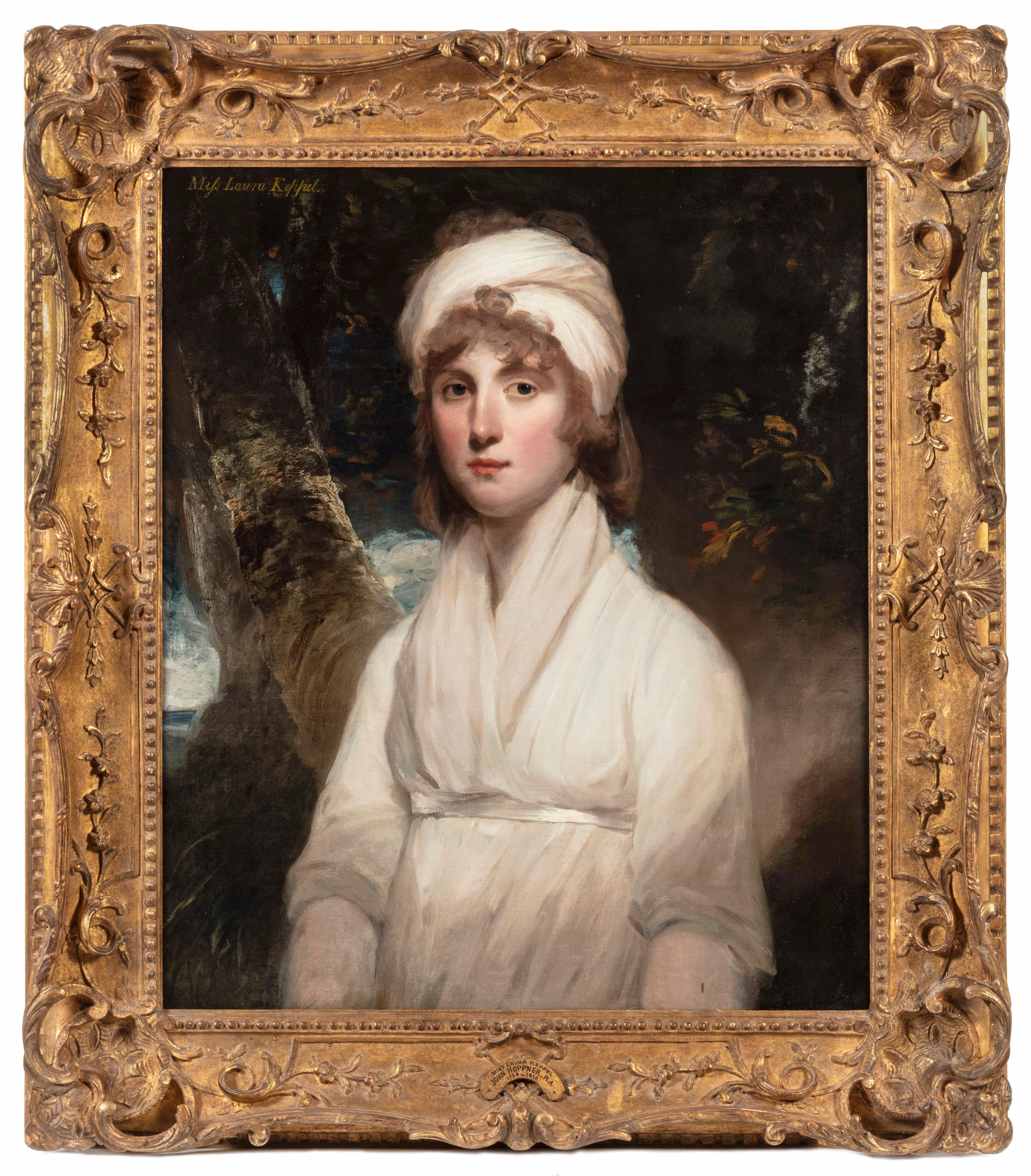Items Similar to Portrait of a Gentleman
Want more images or videos?
Request additional images or videos from the seller
Bartholomäus SarburghPortrait of a Gentleman1620s
1620s
About the Item
Bartholomäus Sarburgh was a highly popular portrait painter in his time, and was probably taught in the Hague by Jan Anthonisz van Ravenstein. He resided in Bern from 1620 to 1623, where he painted some of his finest works. After this, we know of visits to Basel, The Hague and Cologne. The latter trip being in 1637, the same year in which he is recorded to have painted a copy of the Madonna of Mayor Meyer (later known as the "Darmstadt Madonna") for Queen Maria de ́ Medici, which was long considered to be an authentic Holbein. Many of Sarburgh's works are kept in museums and thus do not turn up on the art market that often.
This portrait of a man is a conventional half-figure representation of a model on a neutral background, created by the master in the 1620s during his active creative period in Bern and Basel.
The static solemnity of the model is enlivened by his facial features that the artist has captured with great skill. The author has created a convincing character whose benevolent personality and expressive glance pointed toward the viewer convey the mentality of the era and arouse interest in this type of person. The portrait impresses us as not just a picture of an unfamiliar individual but as generalization of a man who lived in those days, adding historical value to this work of art. Also the artist’s meticulous treatment of fabrics conveying the qualities of the material, the vain collar and the stately line of buttons on the coat, deserve special attention.
- Creator:Bartholomäus Sarburgh (1590 - 1650, German)
- Creation Year:1620s
- Dimensions:Height: 26.38 in (67 cm)Width: 19.89 in (50.5 cm)
- Medium:
- Period:
- Condition:
- Gallery Location:Zürich, CH
- Reference Number:1stDibs: LU2570212832012
About the Seller
No Reviews Yet
Vetted Seller
These experienced sellers undergo a comprehensive evaluation by our team of in-house experts.
Established in 2007
1stDibs seller since 2023
Typical response time: 8 hours
- ShippingRetrieving quote...Ships From: Zürich, Switzerland
- Return PolicyThis item cannot be returned.
More From This SellerView All
- Stopover for Riders in a VillageLocated in Zürich, CHJoost Cornelisz Droochsloot or Droogsloot was a Dutch Golden age painter of village scenes, landscapes, genere pictures, moral allegories and biblical stories. He was born in Haarlem, and he was a pupil of Esaias van de Velde...Category
17th Century Dutch School Figurative Paintings
MaterialsOil
- DaydreamsBy Grigory GluckmannLocated in Zürich, CHGrigory Gluckmann Vitebsk 1898 – 1973 Los Angeles "Daydreams" Oil on panel 71 by 89 cm Signed (lower right) “Gluckmann”; variously labelled (on the frame) Born in Russia in 1898, G...Category
20th Century Impressionist Figurative Paintings
MaterialsOil
- CompositionBy Grigory GluckmannLocated in Zürich, CHGrigory Gluckmann Vitebsk 1898 – 1973 Los Angeles "Composition" Signed in Latin (lower right) “Gluckmann” Born in Russia in 1898, Grigory Gluckmann studied in Moscow and eventually ...Category
20th Century Impressionist Figurative Paintings
MaterialsOil
- Boar HuntBy Abraham HondiusLocated in Zürich, CHAbraham Hondius, a Dutch painter of the Baroque period, was born into the family of a stonemason. He studied painting under Cornelis Saftleven (1607/08 – 1681) and possibly under Pie...Category
17th Century Paintings
MaterialsOil
- A Guardroom Interior with a Seated Woman Amongst PlunderLocated in Zürich, CHJacob Duck (1600–1667) was a Dutch Golden Age painter who specialized in guardroom interiors, or “cortegaerdje.” He was born in Utrecht, the Netherlands, an...Category
17th Century Paintings
MaterialsOil
- Boy and a Girl with a CatBy Jan Miense MolenaerLocated in Zürich, CHJan Miense Molenaer was a Dutch Golden Age genre painter whose style was a precursor to Jan Steen’s work during Dutch Golden Age painting. He shared a studio with his wife, Judith Leyster, also a genre painter, as well as a portraitist and painter of still-life. Both Molenaer and Leyster may have been pupils of the successful Dutch painter, Frans Hals. Molenaer was born and died in Haarlem. He achieved a style close to Hals’ early on in his career, but later developed a style like that of Dutch genre painter, Adriaen van Ostade. His genre works often depicted players of music, such as his The Music Makers (Museum of Fine Arts, Budapest), The Duet(Seattle Art Museum), or Family Making Music (Frans Hals Museum). He also depicted Taverns and the activities of card games or games of the times such as La main chaude, or in Dutch, Handjeklap, which literally means clapping hands. Molenaer also cleverly depicted biblical stories in his own time and surroundings, such as representing a scene from Peter’s Gospel set in a Dutch Tavern...Category
17th Century Paintings
MaterialsOil
You May Also Like
- Island of Broken Toys (diptych)Located in Burlingame, CA'Island of Broken Toys' 2019, a diptych contemporary oil on canvas painting by Tamera Avery, whose paintings are created with wit and wisdom. Avery's work...Category
21st Century and Contemporary Contemporary Portrait Paintings
MaterialsCotton Canvas, Oil
- Ralph Pallen Coleman (American 1892-1968) A Monumental Painting of Jesus ChristLocated in New York, NYRalph Pallen Coleman (American 1892-1968) A Monumental Painting of "The Resurrection of Jesus Christ", circa 1940. Measuring 102" high x 77" wide (framed), this massive oil on canvas painting is truly one of a kind. The quality throughout the entire painting is masterful. The painting is very realistically painted with bright, vibrant, colors which shows the artists true passion and love for Jesus and Christianity. Ralph Pallen Coleman was an American painter and illustrator. His career spanned more than half a century during which he illustrated stories for many magazines, and later, religious illustrations and paintings which provided images of Christianity to millions of people during the 1950s-1960's. A native of Philadelphia, Pennsylvania, he grew up and lived there throughout his 75 years. He received his formal art education at the Philadelphia School...Category
1940s Portrait Paintings
MaterialsOil, Canvas
- Oil Painting / Photorealism / Figurative Art / Human Figure /MuseumBy Bruce AdamsLocated in Buffalo, NYBruce Adams was a painter, art educator, and writer. Born in Buffalo, N.Y., in 1952, he received a B.S. in 1976 and an M.A. in 1983 from Buffalo State College. Adams’s work is includ...Category
1980s Contemporary Figurative Paintings
MaterialsCanvas, Oil
- Madonna and Child with Angels in the CloudsLocated in New York, NYProvenance: Charles H. and Virginia Baldwin, Claremont, Colorado Springs, Colorado ca. 1907-1934; thence by descent until sold in 1949 to: Charles Blevins Davis, Claremont (renamed Trianon), Colorado Springs 1949 -until gifted in 1952 to: The Poor Sisters of Saint Francis, Trianon, Colorado Springs, 1952 until acquired, 1960, by: John W. Metzger, Trianon, renamed as the Trianon School of Fine Arts, Colorado Springs, 1960-1967; when transferred to: The Metzger Family Foundation, Trianon Art Museum, Denver, 1967 - 2004; thence by descent in the Metzger Family until 2015 Exhibited: Trianon Art Museum, Denver (until 2004) The present work is a spectacular jewel-like canvas by Amigoni, rich in delicate pastel colors, most likely a modello for an altarpiece either lost or never painted. In it the Madonna stands firmly upon a cloud in the heavens, her Child resting on a delicate veil further supported by a cloud, as he gently wraps his arm around his mother’s neck. From above angels prepare to lower flowers and a wreath, while other angels and seraphim surrounding the two joyfully cavort. Dr. Annalisa Scarpa, author of the forthcoming monograph on Jacopo Amigoni...Category
18th Century and Earlier Figurative Paintings
MaterialsCanvas, Oil
- Portrait of Laura Keppel, later Lady SouthamptonBy Sir John HoppnerLocated in New York, NYInscribed, upper left: “Miss Laura Keppel” Provenance: Commissioned from the artist and by descent in the Keppel family estate, Lexham Hall, Norfolk, to: Major Bertram William Arnol...Category
18th Century Paintings
MaterialsCanvas, Oil
- Portrait of a Lady with a ChiqueadorLocated in New York, NYProvenance: Torres Family Collection, Asunción, Paraguay, ca. 1967-2017 While the genre of portraiture flourished in the New World, very few examples of early Spanish colonial portraits have survived to the present day. This remarkable painting is a rare example of female portraiture, depicting a member of the highest echelons of society in Cuzco during the last quarter of the 17th century. Its most distinctive feature is the false beauty mark (called a chiqueador) that the sitter wears on her left temple. Chiqueadores served both a cosmetic and medicinal function. In addition to beautifying their wearers, these silk or velvet pouches often contained medicinal herbs thought to cure headaches. This painting depicts an unidentified lady from the Creole elite in Cuzco. Her formal posture and black costume are both typical of the established conventions of period portraiture and in line with the severe fashion of the Spanish court under the reign of Charles II, which remained current until the 18th century. She is shown in three-quarter profile, her long braids tied with soft pink bows and decorated with quatrefoil flowers, likely made of silver. Her facial features are idealized and rendered with great subtly, particularly in the rosy cheeks. While this portrait lacks the conventional coat of arms or cartouche that identifies the sitter, her high status is made clear by the wealth of jewels and luxury materials present in the painting. She is placed in an interior, set off against the red velvet curtain tied in the middle with a knot on her right, and the table covered with gold-trimmed red velvet cloth at the left. The sitter wears a four-tier pearl necklace with a knot in the center with matching three-tiered pearl bracelets and a cross-shaped earing with three increasingly large pearls. She also has several gold and silver rings on both hands—one holds a pair of silver gloves with red lining and the other is posed on a golden metal box, possibly a jewelry box. The materials of her costume are also of the highest quality, particularly the white lace trim of her wide neckline and circular cuffs. The historical moment in which this painting was produced was particularly rich in commissions of this kind. Following his arrival in Cuzco from Spain in the early 1670’s, bishop Manuel de Mollinedo y Angulo actively promoted the emergence of a distinctive regional school of painting in the city. Additionally, with the increase of wealth and economic prosperity in the New World, portraits quickly became a way for the growing elite class to celebrate their place in society and to preserve their memory. Portraits like this one would have been prominently displayed in a family’s home, perhaps in a dynastic portrait gallery. We are grateful to Professor Luis Eduardo Wuffarden for his assistance cataloguing this painting on the basis of high-resolution images. He has written that “the sober palette of the canvas, the quality of the pigments, the degree of aging, and the craquelure pattern on the painting layer confirm it to be an authentic and representative work of the Cuzco school of painting...Category
17th Century Old Masters Paintings
MaterialsCanvas, Oil
Recently Viewed
View AllMore Ways To Browse
Medici Collar
Mary Period Portrait
Riser On Feet
Green Black Bottega Boots
Robbie Conal
Lord William Art
Ryan Gall
Original Portrait Paintings
Antique Old Master Paintings
Men Cloak
Scottish Miniature Portrait
Oil Painting Of King George V
Dutch Naive Painting
Sir Joan
Philip Mercier
Thomas Cromwell
1700s Dress
Duke Of Wellington Portrait





